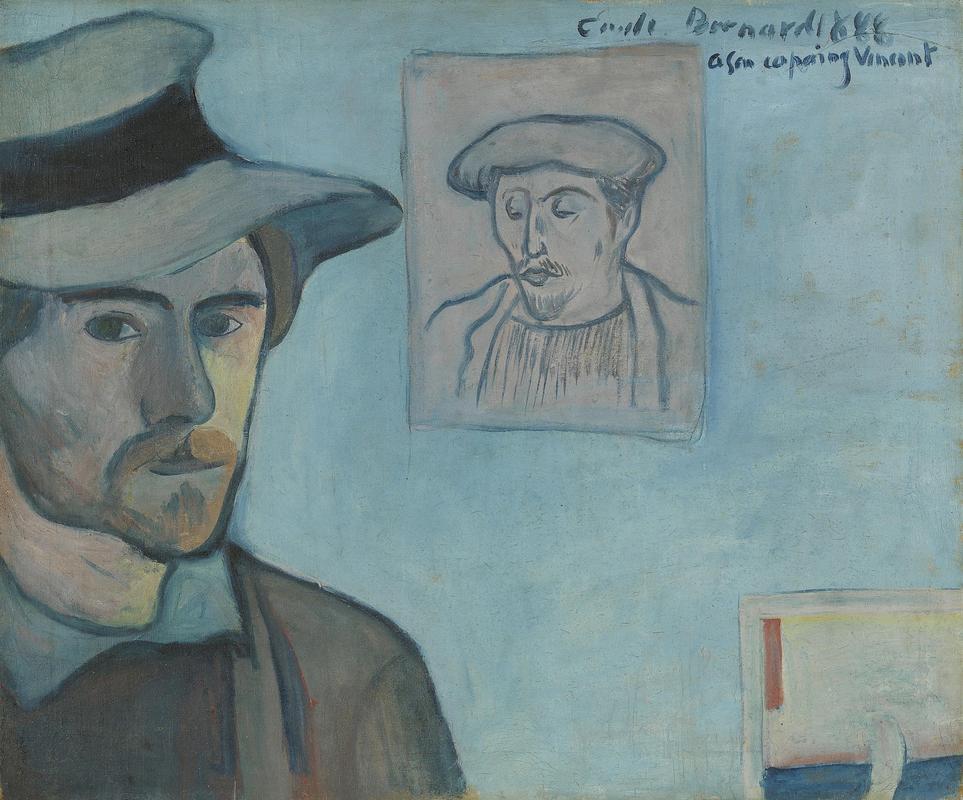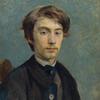More about Self-Portrait with Portrait of Gauguin

Contributor
Émile Bernard’s Self Portrait with Portrait of Gauguin was made per the request of dear old Vincent van Gogh, along with its twin Self Portrait with Portrait of Émile Bernard by Paul Gauguin.
Van Gogh, who was isolated from the art worlds of both Paris and Pont-Aven, Brittany, where Bernard and Gauguin lived, needed a way to connect with other artists in France. He was friends via letter-writing with many artists but wanted something more concrete to connect him with his contemporaries. He found the answer in the Japanese tradition of printmaking. Printmakers often made work for each other, so van Gogh asked his friends Gauguin and Émile Bernard to send him portraits of one another.
Bernard put a huge, screeching halt to that idea as he was half Gauguin’s age and thoroughly intimidated by the man. Instead the two made self portraits with small portraits of each other within the self portrait. Portrait-ception.
This arrangement led to the creation of Self Portrait with Portrait of Gauguin. The painting features Bernard on the left, a portrait of Gauguin in the middle, and a Japanese woodblock print on the bottom right. Below his signature on the top right, Bernard dedicated the piece to his friend (“copain” in French), van Gogh. But Bernard decided to be cheeky and added a “g” at the end of copain, in an attempt to make fun of the French accent in the south of France, where van Gogh was living. Bernard, you cad. Van Gogh got past the joke and said of the work in a letter to his brother, Theo, “I myself like Bernard’s very much, it’s nothing but an idea of a painter, some cursory tones, some blackish lines, but it’s as stylish as real, real Manet.” High praise coming from a person would become known as one of the greatest artists in history.
Sources
- "697 (701, 545): To Theo Van Gogh. Arles, Thursday, 4 Or Friday, 5 October 1888. - Vincent Van Gogh Letters." Vangoghletters.org. Web. 23 Oct. 2018. http://vangoghletters.org/vg/letters/let697/letter.html
- "Self-Portrait With Portrait Of Gauguin - Émile Bernard - Google Arts & Culture." Google Cultural Institute. Web. 23 Oct. 2018. https://artsandculture.google.com/asset/self-portrait-with-portrait-of-…
- "Self-Portrait With Portrait Of Gauguin - Van Gogh Museum." Vangoghmuseum.nl. Web. 23 Oct. 2018. https://www.vangoghmuseum.nl/en/collection/s0206V1962











